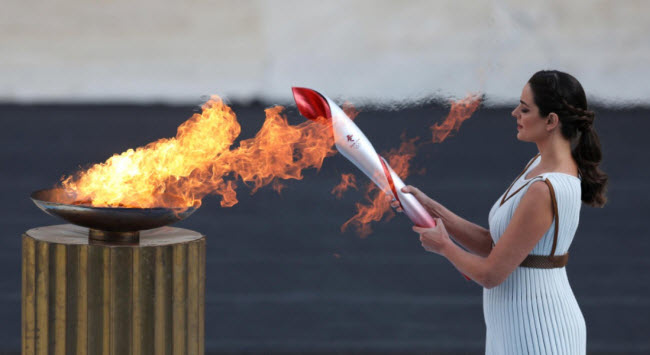The Olympic torch is a key symbol closely associated with the Olympic Games, linking the ancient games once practiced in Greece to the modern games hosted in cities around the world. The games cannot begin without the lighting of the torch, which is prepared and ignited months before the event. The flame is lit in Olympia, Greece, the birthplace of the ancient games, and then begins its journey in the Olympic torch relay, often traveling through various continents and countries before finally reaching the host city. Its journey concludes with the lighting of the Olympic cauldron during the opening ceremony, where it remains lit for the duration of the games until it is extinguished during the closing ceremony. Carrying the torch is considered a great honor for any athlete, and many famous runners throughout history have had the privilege of participating in the relay.
The History of the Olympic Torch
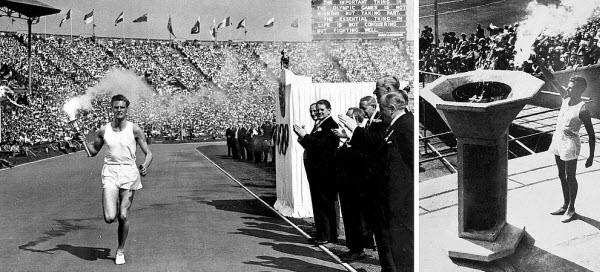
The Olympic torch was first introduced as a symbol of the modern Olympic movement by architect Jan Wils, who designed the stadium for the 1928 Summer Olympics in Amsterdam, Netherlands. He drew inspiration from an ancient Greek ritual in which a sacred fire was kept burning for the duration of the ancient Olympic Games at the altar of the goddess Hestia. In Greek mythology, fire held divine significance, as it was believed that Prometheus stole it from the gods and gave it to humans. Sacred fires were thus kept in many Greek temples, including in Olympia, where the games were held in honor of Zeus. Fires were lit at his temple, as well as that of his wife, Hera, where the modern Olympic torch is still ignited during a ceremony every two years.
When the tradition was revived at the 1928 Summer Olympics, a worker from the Amsterdam electricity company lit the first modern Olympic flame in the Marathon Tower of the Olympic Stadium. From that point on, the Olympic torch became a part of the Summer Games, and its significance was further enhanced with the introduction of the torch relay at the 1936 Summer Olympics in Berlin.
How Is the Olympic Torch Lit?
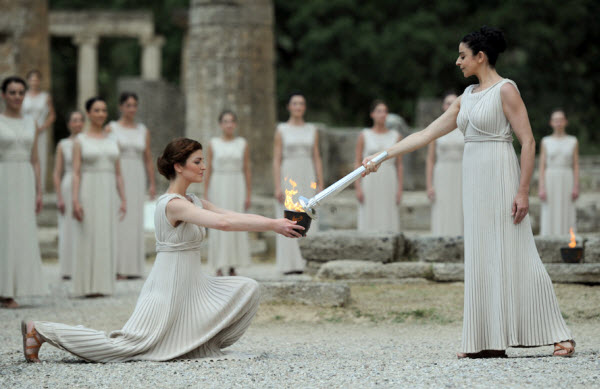
The Olympic flame is lit several months before the opening ceremony of the upcoming games in a ceremony held at the ancient site of Olympia in Greece. During this event, 11 women representing the Vestal Virgins, priestesses of the Roman goddess Vesta, perform a ritual in the Temple of Hera. The flame is ignited using the sun’s rays, concentrated through a parabolic mirror, and the first torchbearer, typically a Greek athlete, is presented with the flame along with an olive branch. A dove is released to symbolize peace, and the ceremony begins with the Olympic hymn, followed by the national anthem of the host country, and finally the Greek national anthem. The flame then travels around Greece before it is handed over in a ceremony at the Panathenaic Stadium in Athens, where it is passed to the host country.
Historical Moments Involving the Olympic Torch
The torch relay first began in 1936, when Carl Diem introduced the concept of transporting the flame from Olympia to Berlin. The relay covered 3,187 kilometers and involved 3,331 runners over 12 days, although there were minor protests in Yugoslavia and Czechoslovakia, which were quickly quelled. A notable incident occurred during the 1956 Melbourne Olympics when veterinary student Barry Larkin staged a protest by carrying a fake torch made from flaming underwear attached to a chair leg, successfully delivering it to Sydney’s mayor before escaping unnoticed.
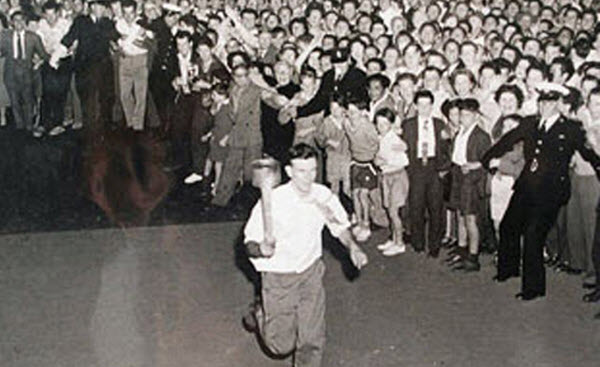
In 2004, the first global torch relay took place, covering over 78,000 kilometers in 78 days. The flame visited all the continents for the first time, including Africa and South America, before returning to Athens. However, the 2008 torch relay in Beijing faced human rights protests in various cities. In Paris, the flame was extinguished multiple times by Chinese officials, and protests in San Francisco led to changes in the torch route.
Due to these controversies, in 2009, the International Olympic Committee announced that future torch relays would take place solely within the host country after the Greek leg, beginning with the 2014 Winter Olympics. The 2010 Vancouver Winter Olympics and the 2012 London Summer Olympics adhered to this rule, although brief stops were made in the U.S. and Ireland.
How Is the Torch Transported?
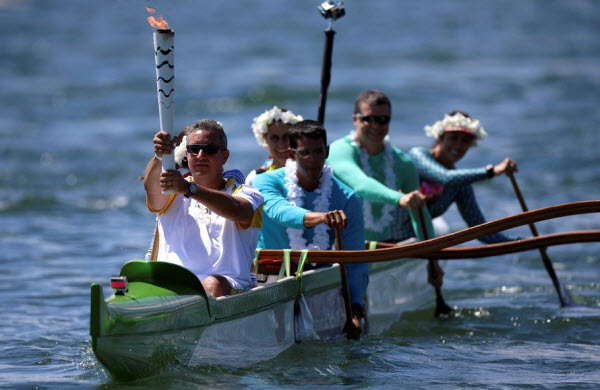
While the torch is traditionally carried by runners, it has been transported in many creative ways. It has traveled by boat across the English Channel in 1948 and 2012 and was carried by rowers in Canberra, Australia, and on a dragon boat in Hong Kong in 2008. In 1952, it was flown by airplane for the first time to Helsinki, Finland, and in 1956, it was transported on horseback to Stockholm for the equestrian events.
Technological advancements have also influenced how the torch is carried. In 1976, the flame was transformed into a radio signal and transmitted from Athens to Ottawa, Canada, via satellite, where it was used to ignite a new flame with a laser beam. The torch has even been carried into space by astronauts in 1996, 2000, and 2013, albeit without an open flame. Other unique transport methods have included an indigenous American canoe, a camel, the Concorde, and even underwater. In 1968, a diver carried the flame above water in Marseille, France, and in 2000, another diver used an underwater flare to carry the torch through the Great Barrier Reef en route to Sydney.

The torch relay ends with the lighting of the Olympic cauldron during the opening ceremony, often by a famous or accomplished athlete from the host country. One of the most iconic moments was when boxer Muhammad Ali lit the cauldron at the 1996 Atlanta Summer Olympics.
Can the Olympic Flame Go Out?
Yes, the Olympic flame can be accidentally or deliberately extinguished during the relay, and on at least one occasion, the cauldron itself has gone out during the games. To guard against this, multiple backup flames are transported with the torchbearers and kept at various locations. If the flame goes out, it is relit from one of the backup flames, all of which originate from the original lighting ceremony in Olympia. One notable instance occurred at the 1976 Montreal Summer Olympics when a rainstorm extinguished the cauldron, and an official tried to relight it with a cigarette lighter before the flame was quickly restored from a backup source.

Today’s torches are designed with safeguards to prevent the flame from going out. Each torch contains two flames: a visible yellow flame that burns hotter and is more susceptible to wind and rain, and a smaller blue flame that is less visible but better protected. If the yellow flame is extinguished, the blue flame can reignite it. Additionally, the fuel inside the torch allows the flame to burn for up to 15 minutes before needing to be relit.
Notable Torchbearers
The final torchbearer, who lights the cauldron during the opening ceremony, often symbolizes the values of the Olympic Games. While some are well-known athletes, others represent broader ideals. For example, Japanese runner Yoshinori Sakai, born on the day of the Hiroshima bombing, lit the cauldron at the 1964 Tokyo Olympics to symbolize peace and reconstruction. In 1976, two teenagers from different linguistic communities in Canada lit the cauldron to represent the country’s unity. In 1968, Enriqueta Basilio became the first woman to light the cauldron at the Mexico City Olympics, and Chinese gymnast Li Ning famously “flew” around the stadium on wires to light the cauldron at the 2008 Beijing Olympics.
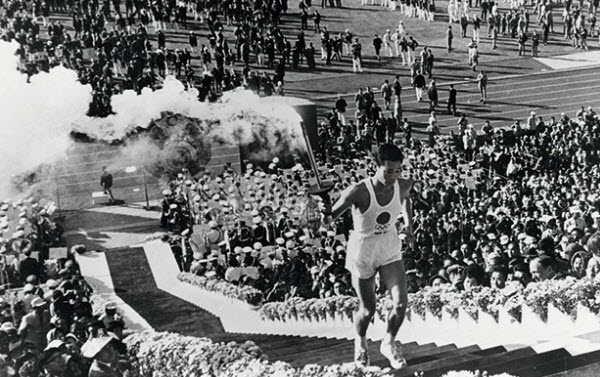
One of the most dramatic cauldron lightings occurred at the 1992 Barcelona Olympics, where Paralympic archer Antonio Rebollo shot a flaming arrow to ignite the cauldron. Although later footage suggested the flame may have been ignited from below, the moment remains one of the most memorable in Olympic history.
